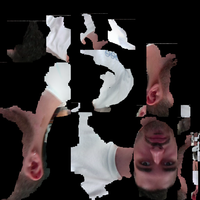Difference between revisions of "User:Tsrohwuob"
Jump to navigation
Jump to search
| (22 intermediate revisions by the same user not shown) | |||
| Line 1: | Line 1: | ||
| − | |||
| + | =Info= | ||
| + | Jelle van Bouwhorst <br><br> 0928746@hr.nl <br><br> Graphic Design y3 <br><br>[[File:JelleImage1.png|200px]] | ||
| − | + | ==Year 2 (practice try-out)== | |
| − | == | + | [[Practice 2 - Fantastic Forgeries: Making New Cultural Memory]] |
| − | |||
| − | - | ||
| − | |||
| − | |||
| − | |||
| − | |||
| − | |||
| − | |||
| − | |||
| − | |||
| − | |||
| − | |||
| − | |||
| − | |||
| − | |||
| − | |||
| − | |||
| − | |||
| − | |||
| − | |||
| − | |||
| − | |||
| − | |||
| − | [[ | ||
| − | |||
| − | |||
| − | |||
| − | |||
| − | |||
| − | |||
| − | |||
| − | |||
| − | |||
| − | |||
| − | |||
| − | |||
| − | |||
| − | |||
| − | |||
| − | |||
| − | |||
| − | |||
| − | |||
| − | |||
| − | |||
| − | |||
| − | |||
| − | |||
| − | |||
| − | |||
| − | |||
| − | |||
| − | |||
| − | |||
| − | |||
| − | |||
| − | |||
| − | |||
| − | |||
| − | |||
| − | |||
| − | |||
| − | |||
| − | |||
| − | |||
| − | |||
| − | |||
| − | |||
| − | |||
| − | |||
| − | |||
| − | |||
| − | |||
| − | |||
| − | |||
| − | |||
| − | |||
| − | |||
| − | |||
| − | |||
| − | |||
| − | |||
| − | |||
| − | |||
| − | |||
| − | |||
| − | |||
| − | |||
| − | |||
| − | |||
| − | |||
| − | |||
| − | |||
| − | |||
| − | |||
| − | |||
| − | |||
| − | |||
| − | |||
| − | |||
| − | |||
| − | |||
| − | |||
| − | |||
| − | |||
---- | ---- | ||
| − | [[ | + | ==Year 3 Practice== |
| + | =====Project 1 — Critical Making exercise===== | ||
| + | [[unusable airplane]] | ||
| + | =====Project 2 — Cybernetic Prosthetics===== | ||
| + | [[360 DEGREES HUNTER]] | ||
| + | =====Project 3 — From Devices to systems===== | ||
| + | [[NO TAN project]] | ||
| + | =====Project 5 — Position Paper===== | ||
| + | [[Position Paper, Jelle Peter]] | ||
| + | =====Project 4 — Cartography of Complex Systems & the Anthropocene===== | ||
| + | [[PUR mapping]] | ||
| + | =====Project 6 — End Project===== | ||
| + | [[The evolution of PUR]] | ||
| + | =====Project 7 — Research End Project===== | ||
| + | [[Research Document, The evolution of PUR]] | ||
| + | =====EXTRA — Unravel the Code===== | ||
| + | [[Anecdotal Data Doodles]] | ||
Latest revision as of 10:53, 22 December 2018
Contents
- 1 Info
- 1.1 Year 2 (practice try-out)
- 1.2 Year 3 Practice
- 1.2.1 Project 1 — Critical Making exercise
- 1.2.2 Project 2 — Cybernetic Prosthetics
- 1.2.3 Project 3 — From Devices to systems
- 1.2.4 Project 5 — Position Paper
- 1.2.5 Project 4 — Cartography of Complex Systems & the Anthropocene
- 1.2.6 Project 6 — End Project
- 1.2.7 Project 7 — Research End Project
- 1.2.8 EXTRA — Unravel the Code
Info
Jelle van Bouwhorst
0928746@hr.nl
Graphic Design y3
Year 2 (practice try-out)
Practice 2 - Fantastic Forgeries: Making New Cultural Memory
Year 3 Practice
Project 1 — Critical Making exercise
Project 2 — Cybernetic Prosthetics
Project 3 — From Devices to systems
Project 5 — Position Paper
Project 4 — Cartography of Complex Systems & the Anthropocene
Project 6 — End Project
Project 7 — Research End Project
Research Document, The evolution of PUR